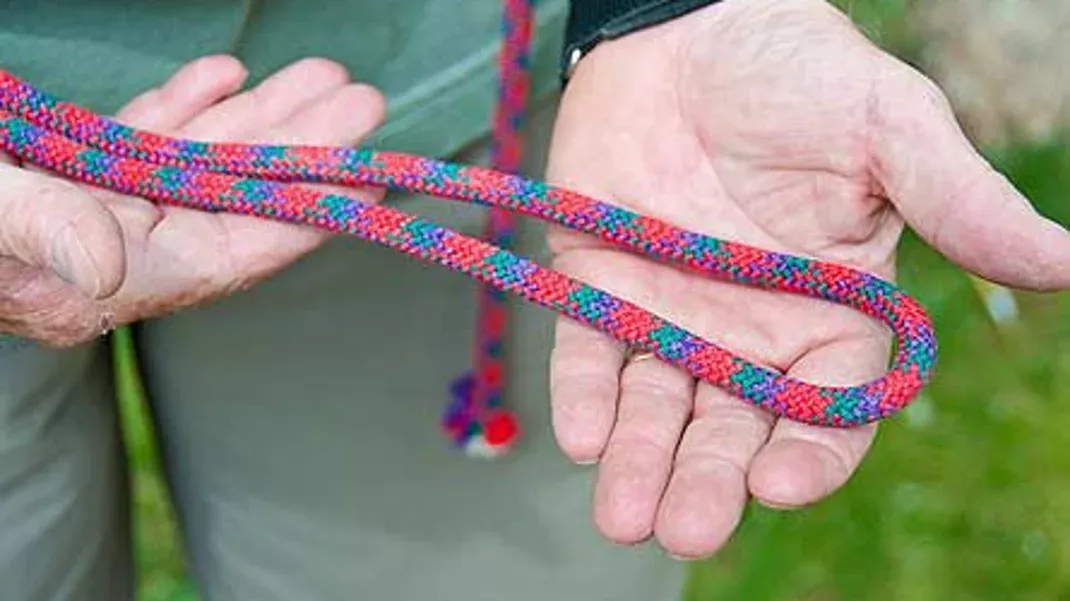How to Tie an Overhand Knot, Mid-Rope
To tie an overhand knot mid-rope, start by forming a loop in the middle of the rope. Then, bring the working end of the rope over and around the standing end, passing it through the loop from the bottom. Pull the working end through the loop to create a simple knot. Tighten the knot by pulling both ends of the rope in opposite directions. The overhand knot is a simple and effective way to secure the rope in the middle, and it can be used in a variety of situations, from camping and climbing to boating and crafting.

Tying an overhand knot mid-rope is a simple and essential skill for anyone who spends time in the outdoors. Whether you're a hiker, climber, sailor, or camper, knowing how to tie this knot can be incredibly useful in a variety of situations. The overhand knot is one of the most basic and versatile knots in the world of knot tying, and once mastered, it can be used for a wide range of purposes, from securing a load to creating a stopper knot.
To tie an overhand knot mid-rope, you will need a length of rope and your hands. It is important to use a rope that is clean and in good condition, as a frayed or damaged rope can compromise the integrity of the knot. Additionally, ensure that the rope is of sufficient length for the task at hand, as tying a knot with too little rope can make it difficult to work with and may compromise the strength of the knot.
To begin, take the midpoint of the rope and fold it in half to create a bight. A bight is a loop in the rope that is created by folding it back on itself. The bight will be the point at which the overhand knot is tied. Hold the bight in your non-dominant hand, ensuring that there is enough slack in the rope to comfortably tie the knot.
With the bight in your non-dominant hand, take the working ends of the rope in your dominant hand. The working ends are the two loose ends of the rope that are not part of the bight. The next step is to create a simple loop with the bight. To do this, pass one of the working ends through the bight, forming a loop that crosses over the top of the bight. The working end should then be brought around and passed through the loop from underneath, creating a second loop.
At this point, you should have a loop that crosses over the top of the bight, with one of the working ends passing through the loop from underneath. To complete the overhand knot, simply pull the working end through the loop and tighten the knot by pulling on both working ends. The result should be a simple knot that cinches down on the bight, creating a secure and reliable stopper knot.
It's important to take your time and ensure that the knot is tied correctly, as a poorly tied knot can compromise the safety and security of the rope. Check that the knot is snug and that the working ends are of equal length, as an uneven knot may slip or come undone under tension.
The overhand knot is incredibly versatile and can be used for a variety of purposes. It can be used to create a stopper knot at the end of a rope, preventing it from slipping through a pulley or other hardware. It can also be used to secure a load by tying the knot around an object or through a loop. Additionally, the overhand knot can be used as the building block for more complex knots, such as the figure-eight knot or the double overhand knot.
One of the key benefits of the overhand knot is its simplicity and ease of tying. With just a few simple movements, you can create a secure and reliable knot that is suitable for a wide range of applications. This makes the overhand knot an essential skill for anyone who spends time in the outdoors, as it can be used in a variety of situations to secure gear, create anchor points, or build improvised shelter.
In addition to its practical uses, learning how to tie the overhand knot mid-rope can also be a fun and rewarding experience. Knot tying is an ancient and valuable skill that has been passed down through generations, and mastering the overhand knot can give you a sense of connection to the traditions of the past. It can also be a great way to challenge yourself and develop your dexterity and hand-eye coordination.
Once you have mastered the basic overhand knot, you can begin to explore more advanced knot tying techniques and applications. There are countless variations and modifications of the overhand knot that can be used to create complex and secure knots for specific purposes. By building on your foundation of knot tying skills, you can expand your repertoire and become proficient in a wide range of knots and hitches.
In conclusion, learning how to tie an overhand knot mid-rope is a valuable and practical skill that can be used in a variety of outdoor activities. By mastering the overhand knot, you can secure gear, create anchor points, and build improvised shelter, among other uses. Knot tying is an ancient and valuable skill that has been passed down through generations, and mastering the overhand knot can give you a sense of connection to the traditions of the past. Additionally, knot tying can be a fun and rewarding experience that challenges you to develop your dexterity and hand-eye coordination. With practice and dedication, you can become proficient in a wide range of knots and hitches, making you a more skilled and knowledgeable outdoorsman.






